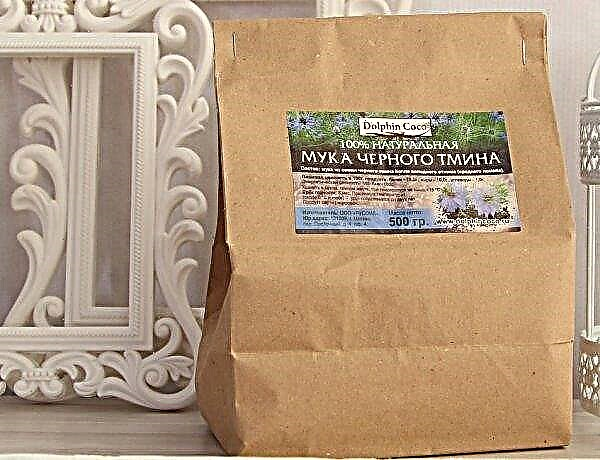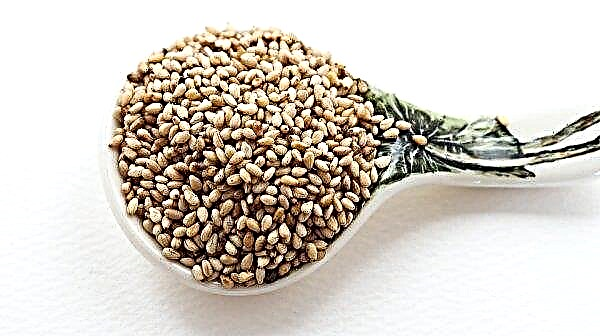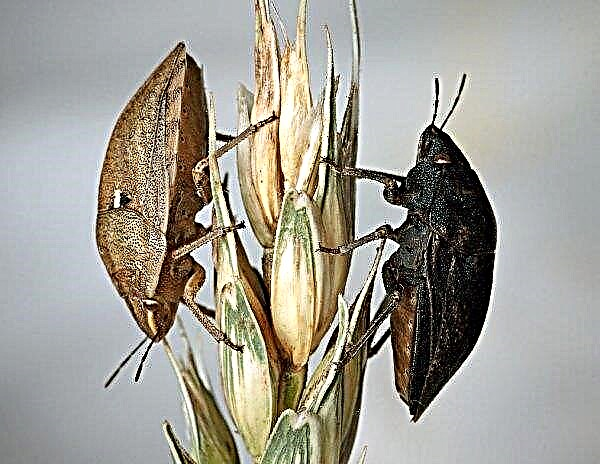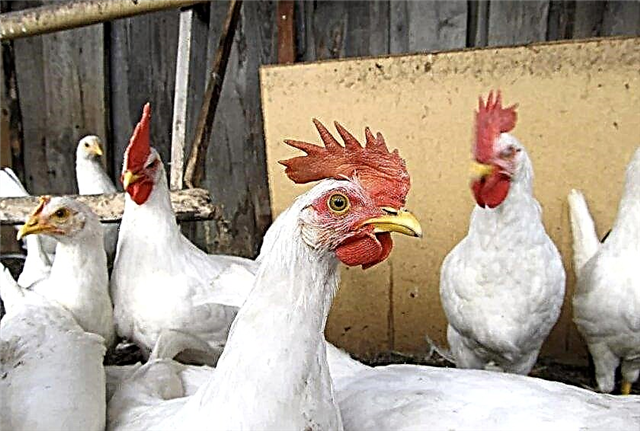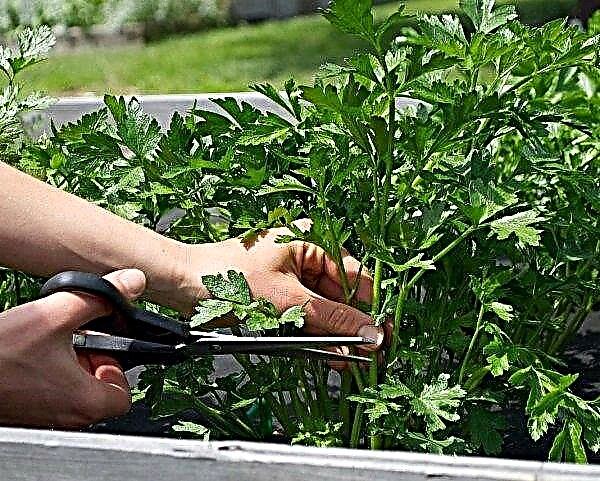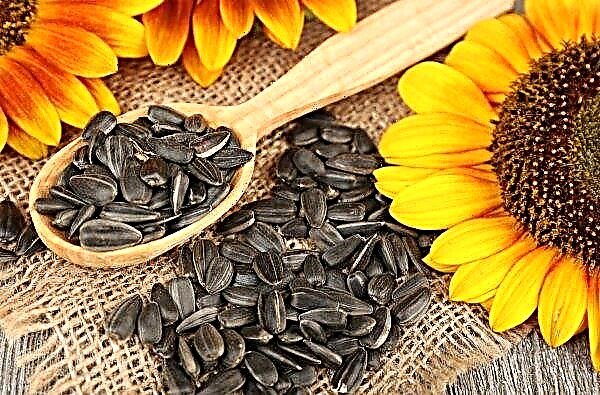Growing cyclamen, the grower may encounter the problem of yellowing leaves. At first glance, the reason seems not entirely clear. Let's try to figure out what can be done to treat cyclamen.
Mistakes in leaving
Yellowing leaves may be a sign of the approaching summer, and not a sign of illness. The homeland of cyclamens is the Mediterranean. It has mild winters and very dry summers. Many Mediterranean plants bloom in winter and sleep in summer so as not to struggle for life in a drought environment. Therefore, if the leaves of cyclamen turn yellow, the reason lies in the preparation for the period of summer dormancy. Returning the plant to bloom after a summer dormant period will not be easy, so try to keep it in bloom without touching the leaves until they fall on their own. This will allow the tuber to work without hibernating. In addition, the flower can respond to the wrong microclimate, insufficient watering, lack of nutrients, as well as to get sick or be attacked by pests.
Returning the plant to bloom after a summer dormant period will not be easy, so try to keep it in bloom without touching the leaves until they fall on their own. This will allow the tuber to work without hibernating. In addition, the flower can respond to the wrong microclimate, insufficient watering, lack of nutrients, as well as to get sick or be attacked by pests.
Did you know? There are about 20 species of cyclamens and they have different flowering seasons, depending on the species. They bloom in different shades of white, red, pink or purple.
Incorrect temperature
Check air temperature. The normal daytime temperature for cyclamen is +15 ... + 18 ° C. At night, the room should be at least + 10 ° C. In a cool microclimate, flowering continues for several weeks longer. High temperatures can cause premature wilting of flowers and leaves.
Direct sunlight
Place the cyclamen on a bright window with indirect light, facing north in the winter. This is the growing season and the plant needs adequate lighting. But direct sunlight should not fall on it. In summer, the plant needs to be removed from bright light and placed in a shaded area.
Inadequate or excessive watering
Check the condition of the soil. Cyclamen likes moderately moist soil. It should be moist to the touch, but never wet. Water should not constantly stagnate in the soil. The frequency of watering a flowering plant is several times a week. Proper watering from the bottom up (sub-irrigation) when the roots take water from the sump. Top watering can cause decay. Pour water into the pan and leave for 20 minutes. After this time, drain the excess. Such watering can be carried out every 2-3 days, when there is no flowering and daily, if the room is hot and the soil dries quickly.
Did you know? Cyclamens reach 25 centimeters in height. Their flowers are usually raised above the leaves on thin stems.
Dry air
The plant does not tolerate cold air below + 10 ° C. But since there are no such temperatures in a residential building, it is worth paying attention to the effect of high temperatures. Excess warm air will reduce flowering from a few months to a couple of weeks. Dry air occurs in rooms or offices with central heating, near heating appliances. For cyclamen, this place is categorically not suitable. Therefore, avoid drafts and hot, dry air.
Nutrient deficiency
When cyclamen is not active and does not grow, you do not need to feed it. This “soaks” the tuber. The optimal time for fertilizing is before blooming once every 2 weeks. Fertilizer begins to be applied from the end of summer or from the beginning of autumn every month. You will need a low nitrogen fertilizer. Those species in which there is a lot of nitrogen will provide abundant greens, but flowering will be small. Unused mineral salts tend to accumulate in the soil. And if you see yellow leaves, then they can be a sign of an excess of fertilizers. To prevent the problem, once a month, water the flower abundantly. Excess salts will be washed off with water.
Important! A low calcium content in the soil also contributes to the appearance of rot - check the soil for neutrality (the norm for cyclamen is 6 pH) and calcium content.
Disease
Some diseases can turn your little cyclamen into a bush with yellowing leaves and fading flowers. Diseases affect the plant during the growth period - in winter. Most of them are not treated, and gardeners recommend throwing a diseased plant before the disease spreads to healthy ones.
Fusarium wilt
Fusarium rot causes rapid wilt. Immediately affects the roots and moves along the xylem of the plant. It is very specific, certain types of Fusarium rot only infect cyclamen. Therefore, pots after flowers that have undergone this disease must be disinfected or replaced with new ones.
Conditions for its appearance: very warm air with a temperature of + 23–35 ° C and excessive humidity (75–80%). Rot bacteria may be present in the soil, but will not appear until the soil is dry. The first symptom of fusarium rot is that the leaves of the cyclamen turn yellow and fade. Remove the plant from the pot and examine the roots. If you cut the stem or tuber of such a flower, you will see that inside it is colorless. Discoloration is the sign by which the flower must be thrown away, as well as those that were next to it. Use fungicides labeled “Against Fusarium Rot” before planting the tuber.
Remove the plant from the pot and examine the roots. If you cut the stem or tuber of such a flower, you will see that inside it is colorless. Discoloration is the sign by which the flower must be thrown away, as well as those that were next to it. Use fungicides labeled “Against Fusarium Rot” before planting the tuber.
Gray rot
Gray rot is caused by the Botrytis fungus, which appears if the center of the plant is too moist. Additionally, insufficient air circulation forms the optimal environment for the development of the fungus. This type of rot develops at the base of the stems and quickly attacks flower buds and leaves. All affected parts must be removed and discarded, and the plant moved to a room with better air circulation. If the flower is badly infected, it is better to throw it away.
Important! Tubers contain various substances, including saponins - plant poisons. They can cause poisoning, so keep cyclamen out of the reach of children. The degree of poisoning depends on the amount taken orally.
To improve air circulation, you can install a fan, after removing all damaged parts of cyclamen. Try to avoid getting water on the leaves or crown when watering. Erwinia bacteria are responsible for mild rotting. Cyclamen turns yellow, leaves fade, and the tuber becomes soft. This problem occurs if the tubers are planted too deep, and the soil mixture contains a lot of moisture, a lot of heat and a lot of fertilizer. The affected plant is also best discarded. Wood ash can prevent the appearance of gray rot. But if the plant is severely affected, then fungicides are used. “Phytosporin M” is a natural bifungicide that contains Bacillus subtilis bacteria. Developing in the soil, they destroy pathogenic microflora, including bacteria that cause gray rot. The drug not only heals, but also improves the condition of the soil and increases the resistance of cyclamen to diseases. If you purchased the drug in liquid form, then you do not need to breed it. Use according to the instructions on the packaging.
Wood ash can prevent the appearance of gray rot. But if the plant is severely affected, then fungicides are used. “Phytosporin M” is a natural bifungicide that contains Bacillus subtilis bacteria. Developing in the soil, they destroy pathogenic microflora, including bacteria that cause gray rot. The drug not only heals, but also improves the condition of the soil and increases the resistance of cyclamen to diseases. If you purchased the drug in liquid form, then you do not need to breed it. Use according to the instructions on the packaging.
Pests
Pests can also cause yellowing of leaves. Most of them enter the room with the help of wind, as they have wings. But can be brought from the store along with a new plant. Cyclamen is susceptible to common house plant pests. All of them cause a different degree of damage.
Among the main ones:
- spider mite;
- aphids;
- scale shield;
- thrips.
Did you know? In the Renaissance, cyclamen was considered a cure for ear pain, since the shape of the petals resembles an auricle.
Thrips
Thrips are tiny brown or black insects with a long body and wings pressed to their sides. Their shape is close to cylindrical, for which earlier thrips were called "kolbogodi". They live on the underside of leaves, therefore they are hardly noticeable. Thrips cause double damage: they suck juice and bacteria settle in places that have been hit by insects, causing different types of rot. The problem with rooting out thrips is that they are too small and too fast to move. The main fight strategy is to limit their number.
Distinctive symptoms of infection:
- Thrips are very small and the first thing you notice is a light yellow powder on the leaves. This is pollen that crumbles when insects feed on flowers.
- Light stripes appear on the underside of the leaves. They occur in places of damage to the sheet.
- Leaves darken around the edge.
- There are far fewer colors than before. Holes form on the petals.
 For treatment, dissolve 1 vial of Actellik insecticide in 1 liter of water and spray the plant with it. Then wrap it in a plastic bag for a day to avoid thrips flying to other plants. The insects will die within a few hours, but just hold the bag a little longer to make sure. Repeat the treatment after 7 days.
For treatment, dissolve 1 vial of Actellik insecticide in 1 liter of water and spray the plant with it. Then wrap it in a plastic bag for a day to avoid thrips flying to other plants. The insects will die within a few hours, but just hold the bag a little longer to make sure. Repeat the treatment after 7 days.Shield
The scabbard is a small insect from the family of Hemoptera, which feeds on plant juices. It looks like a small waxy spot on a leaf. The body of the insect is covered with a dense shield, so most insecticides do not act on it. More than 2000 species of scale insects are known. Insects can enter the house along with store plants or the wind.
Distinctive signs of infection:
- yellowing deformed leaves;
- sticky discharge on the leaves.
 The plant affected by the scab should be rearranged separately from the others and the insects removed manually. They need to be removed with a soft toothbrush dipped in an insecticidal soap solution. After a few days, the treatment is repeated.
The plant affected by the scab should be rearranged separately from the others and the insects removed manually. They need to be removed with a soft toothbrush dipped in an insecticidal soap solution. After a few days, the treatment is repeated.Ticks
The cyclamen tick is a tiny arachnid insect invisible to the naked eye. If you look at an infected plant under a microscope or a magnifying glass, then ticks are insects with 8 paws of brown, white or yellow color. They live among foliage, where there is little light. Ticks appear when relative humidity drops below 50%.
The main symptoms of infection:
- cyclamen leaves curl around the edge; although this symptom can also be caused by aphids, aphids are clearly visible, unlike a tick;
- leaves turn pale or yellow, especially young;
- dark spots appeared on the leaves in the lower part;
- the edges of the leaf turn brown;
- the kidneys do not open;
- the flowers become stained, deformed;
- the plant slows down growth.
 The treatment consists in isolating the infected plant. The treatment is carried out by acaricide by spraying. The solution is prepared in strict accordance with the instructions on the package. Since the next generation of ticks will become active 6 days after laying the eggs, the treatment is repeated up to 4 times with an interval of 4-5 days between them. Crohn's plants need to be processed especially carefully.
The treatment consists in isolating the infected plant. The treatment is carried out by acaricide by spraying. The solution is prepared in strict accordance with the instructions on the package. Since the next generation of ticks will become active 6 days after laying the eggs, the treatment is repeated up to 4 times with an interval of 4-5 days between them. Crohn's plants need to be processed especially carefully.Mites can be prevented by maintaining normal humidity in the room (60–65%). You can treat the plant with insecticidal soap in the early stages of infection. But if the plant is highly infected, it is better to simply abandon it.
Aphid
Aphids - a small green insect with a pear-shaped body, long antennae and paws. Some species of aphids have wings. They can also be of other colors (brown, black), but most often aphids are green. Insects are grouped on the underside of cyclamen leaves.
Distinctive symptoms of infection:
- insects leave behind a sticky coating on the leaves, later fungi appear on it;
- the appearance of aphids is familiar to many, therefore, it is not difficult to diagnose their presence;
- the leaves curl around the edge, become pale, turn yellow and fade.
 Begin treatment by isolating and treating the plant with soap and water. Gently wipe with a cloth soaked in a solution of insecticidal soap, the appearance of sticky plaque and accumulation of aphids. If a fungus appears on the leaves, remove the infected parts of the plant.
Begin treatment by isolating and treating the plant with soap and water. Gently wipe with a cloth soaked in a solution of insecticidal soap, the appearance of sticky plaque and accumulation of aphids. If a fungus appears on the leaves, remove the infected parts of the plant.Cyclamen can also be treated with "Malathion" (1 teaspoon per 4 liters of warm water). This is a broad-spectrum insecticide and acaricide that can be used against any sucking insects. But since insecticides are able to discolor the leaves, then start treatment with the use of soap solutions. There is no reliable way to prevent the appearance of aphids. So just control the signs of their appearance.
There are many reasons why the leaves of the cyclamen turn yellow, but all of them can be easily eliminated if you maintain the correct microclimate and monitor the appearance of pests. This can be done using special traps. Then you will not only recognize the problem in time, but also quickly eliminate it.Did you know? Each species of cyclamen is susceptible to infection of only certain types of aphids.

